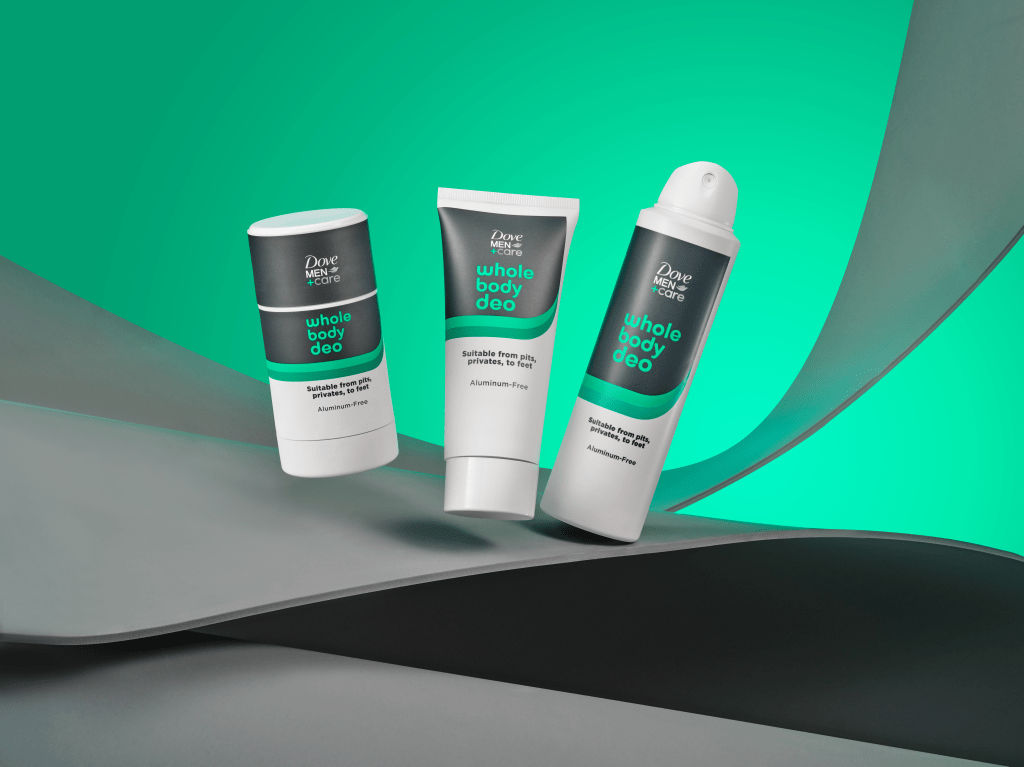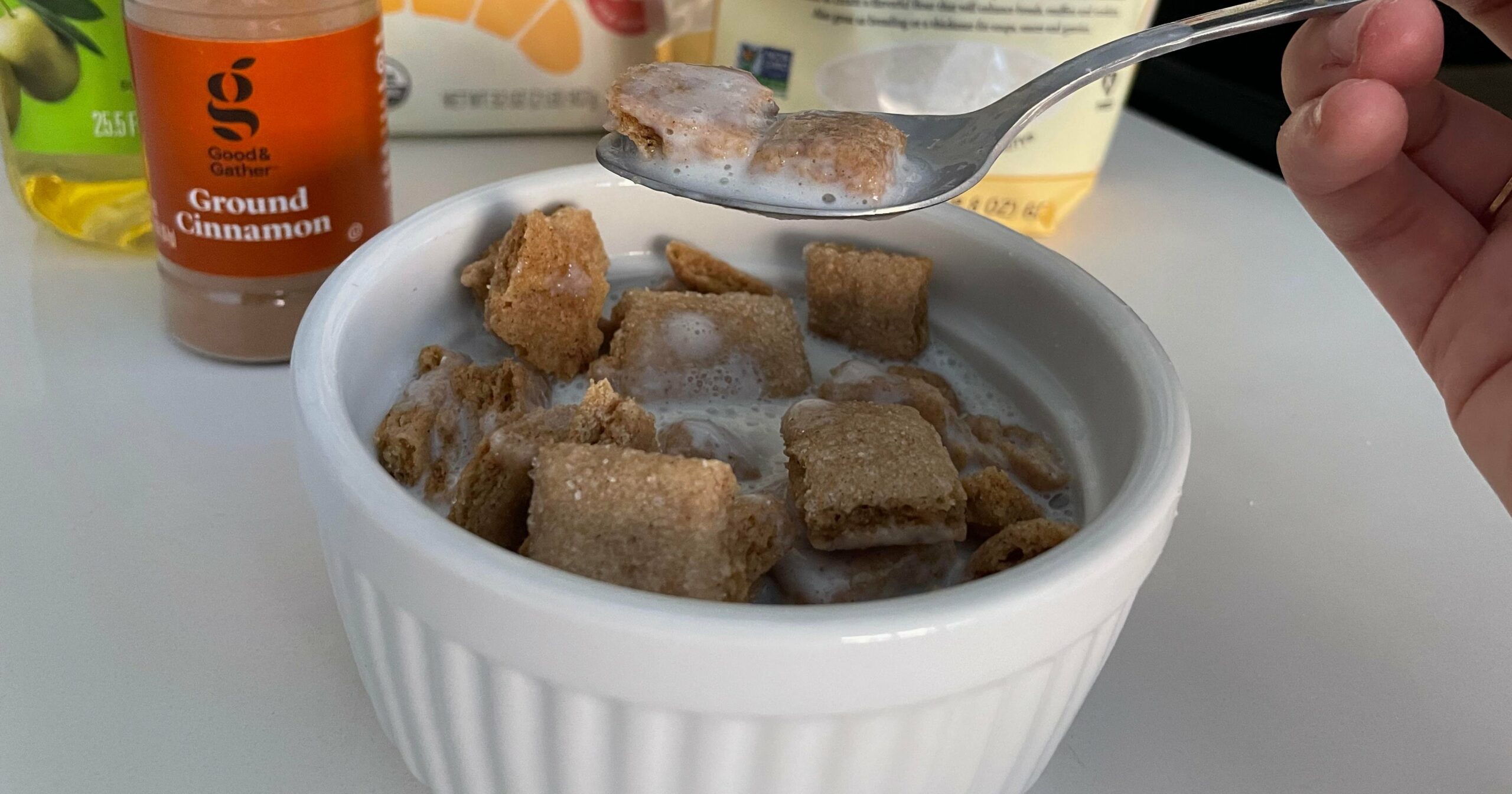Deodorant is no longer just for underarms.
Consumer insights from many brands in the body care space, including Dove and Ban, have shown that people were often using their typical deodorant on other areas of their body, including the groin, feet and chest, leading to a new category of full-body offerings.
“We’re finding that people are just struggling with body odor in general,” said Megan Smith, senior manager of personal care R&D at Unilever. “Men, they’re focused around their chest and private areas, but for women, it’s under bras.”
Data bears out those observations. Spate reports that searches for body deodorant have grown 27 percent since last year. The #FullBodyDeodorant hashtag on TikTok has more than 23 million views.
Related Articles
Additionally, brands found that consumers’ day-to-day lives were impacted, as they struggled to find total body solutions. “There were a lot of compensating behaviors in the absence of having a full-body deodorant product,” said Andrea Wilkerson, vice president, P&G skin and personal care analytics and insights. “Some people were resorting to taking multiple showers a day, layering their clothes to mask the odor or applying different products like powders and sprays and perfumes, but most often they were avoiding close proximity to others.”

With all these factors in mind, a crop of brands have released total-body deodorant lines in an array of formats. Here, some of the new entries
Lumē, which launched in 2017, was an early adopter and driver of the category. Founder and OB-GYN Dr. Shannon Klingman discovered during her residency that women were often incorrectly diagnosed with bacterial vaginosis, when in reality odors were caused by bacteria on the skin combined with exposure to bodily fluids. She found that this could be solved with a deodorizing product infused with mandelic acid, a large molecule that acidifies the skin on the surface and eliminates odor.
Now, Lumē, which is available at Walmart and Target, has exceeded $100 million in annual sales and is the top-searched brand alongside full-body deodorant, according to Spate.
“It was our launch into retail one year ago that made everyone else aware that, ‘Hey, this is a very large white space’ and the way that we were talking about odor control was incredibly disruptive,” said Klingman.
The success of Lumē led Klingman to also start Mando, a full-body deodorant line with the same formulas but different packaging and scents targeted toward men.
While Lumē led the charge, heritage manufacturers, like Procter & Gamble and Unilever, are responding with versions of their own. At P&G, Secret, Old Spice and Native all have their own full-body deodorant lines.
“I’d credit this [popularity] to consumers themselves being willing to share an honest yet often hidden unmet need — one that affects a large portion of the population on a daily basis,” said Freddy Bharucha, president, North America personal care and beauty ecosystem at P&G Beauty, adding that social media and younger generations have been key drivers of the conversation around body odor.
Similarly, Unilever, the largest deodorant manufacturer globally according to the team, has entered the space with collections from Dove, Dove Men + Care and Shea Moisture.
When it comes to full deodorants, there are two skin care-centric approaches to formulation that are prominent. There’s an acid-base for fighting bacteria and odor, and then there are more soothing, deodorizing formulas that use ingredients like coconut oil and shea butter.

Ban opted for the acid approach for a key reason.
“We knew women were using astringents under their arms to remove odor and that’s because there’s bacteria,” said Marissa Vallillo, director of marketing at Ban’s parent company Kao. Furthermore, alpha-hydroxy acids and beta-hydroxy acids have become increasingly common in traditional deodorants over the past few years.
Although these brands differ in their formulations and marketing approach, one strategy is consistent: the need for different formats. While sticks and sprays are a mainstay in both traditional and full-body deodorants, the newer format featured across many of these lines is a cream or balm.
“That form lends itself well to precision application,” said Dr. Maiysha Jones, P&G personal care scientific communications director, adding people use it on their feet, groin area and bikini line.
According to Vallillo, a cream formula also lends itself to areas where consumers don’t want to continuously use the same applicator, specifically sites below the belt.

Akt London, which recently launched in the U.S., offers an allover balmy formula. Late last year, Hume Supernatural launched a cream format, which is now available in more than 2,300 retail locations, including Sprouts and Kroger.
“This space is just exploding so much that a lot of the retailers now understand, ‘Oh, what is all-body deodorant and how do I get it into my store?’” cofounder and chief executive officer Jeremy Horowitz said at the time of launch. “We’ve been approached by more people than we ever have before.”
Although brands and retailers have found that consumers are seeking full-body deodorizing solutions, some experts argue they may be unnecessary.
“Bromhidrosis is when you get an overgrowth of bacteria in [an] area that causes a lot of unpleasant odor,” said New Jersey-based dermatologist Naana Boakye, adding at this point an antibiotic may be necessary. Additionally, these products are not antiperspirants so they do not control sweating, though certain ingredients like corn starch, featured in Shea Moisture’s formulas, can help absorb sweat.

However, companies still identify a large growth opportunity in the category.
“Research from our Dove Men + Care brand in particular found that while only 2 percent of consumers are currently using whole-body deodorant, 76 percent of men want to try a whole-body deodorant,” said Pranav Chandan, Unilever’s category head of deodorants in the United States.
Unilever research also found that 15 percent of Americans overall were looking for a full-body solution.
“Body odor is one of those topics that when people find the courage to open up and discuss, it creates even more conversation and commonality,” said Bharucha.


